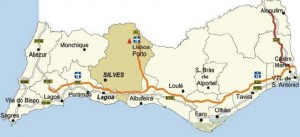Otto Muck
Northcote, Jonathan
Jonathan Northcote is a South African legal practitioner and the author of 16.484ºW 58.521ºN Atlantis, Found?[1369] in which he applies his professional forensic skills to the question of Atlantis. Although initially brought to the subject by Otto Muck’s book[0098], he found aspects of Muck’s ideas unacceptable and began an investigation of his own that led him to conclude that the region of Rockall in the North Atlantic is the most likely candidate as the location of Atlantis,
There is no doubting the quality of Northcote’s research, particularly relating to the geology and underwater topography of the Rockall region, which is fully referenced. However I cannot agree with his treatment of a number of critical items in Plato’s text. These relate to words and phrases such as, continent, Pillars of Heracles, Atlantic, greater than Libya and Asia combined and elephants.
*In 2018, Stuart L. Harris, citing Northcote’s work, published four papers (a-d) on the academia.edu website endorsing the Rockall Plateau as the location of Atlantis. Harris adopts some of Emilio Spedicato’s theories and attributes the destruction of Atlantis to a catastrophic encounter with Nibiru in 9577 BC.*
In January 2019, Northcote revised his book with additional material and published this second edition with the title of Atlantis, Found? An investigation into ancient accounts, bathymetry and climatology [1611]. I am currently working my way through this latest offering and hope to review it in the near future.
(d)
Frank, René
Combes, Michel-Alain
Dr Michel-Alain Combes (1942- ) is a French amateur astronomer with a PhD in astronomy from the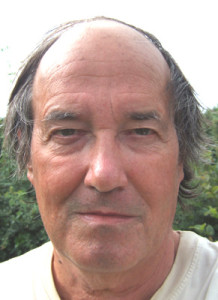 Université Pierre et Marie Curie (Paris VI). For forty years he has studied impact catastrophism and published his views in his book, La Terre Bombardée (The Bombarded Earth). His extensive website(a) endeavours to combine history, myth and science and includes a reference to Atlantis, as well as a kind mention of this site. His book can also be read on his site (French).
Université Pierre et Marie Curie (Paris VI). For forty years he has studied impact catastrophism and published his views in his book, La Terre Bombardée (The Bombarded Earth). His extensive website(a) endeavours to combine history, myth and science and includes a reference to Atlantis, as well as a kind mention of this site. His book can also be read on his site (French).
Combes further claims that although the legends of Phaeton and Typhon are usually treated as referring to different events that they are records of the same encounter with a comet in the late 13th century BC(c). He further suggested that “Surt, Sekhmet, Typhon, Phaeton, Wormwood, Anat and others are the various names of the comet, seen under different skies, at a time when many civilizations were already well established and thriving.”
Combes delivered a paper in English(b) to a 2008 Conference in Paris entitled; The Apocalypse of the Year 10,000 BC – Myth or Reality? It has been proposed that this event may have created the Carolina Bays and destroyed Atlantis as proposed by Otto Muck.
Furthermore, it has also been linked to the onset of the mini ice age known as the Younger Dryas as described by Firestone, West and Warwick-Smith in their book The Cycle of Cosmic Catastrophes[0110].
In 1992, Asteroid ‘3446 ombes’ was named in his honour.
(a) http://www.astrosurf.com/macombes/index.html (French) *
(b) https://www.2008-paris-conference.org/mapage9/macombes-younger-dryas-event-1-xx.html.pdf
Delaage, Guillaume *
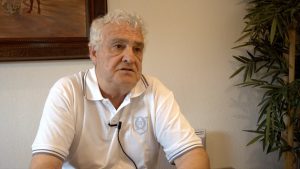 Guillaume Delaage is the author of a number of books on ancient mysteries and esotericism. He frequently refers to Helena Blavatsky and holds her writing in high regard. On his website, there is a six-part article(a) on Atlantis. He reviews the leading theories, but in the final part seems to find the theories of Otto Muck the most convincing.
Guillaume Delaage is the author of a number of books on ancient mysteries and esotericism. He frequently refers to Helena Blavatsky and holds her writing in high regard. On his website, there is a six-part article(a) on Atlantis. He reviews the leading theories, but in the final part seems to find the theories of Otto Muck the most convincing.
His Atlantis papers are no longer online but anyone with the stamina can still read page after page of waffle regarding Hermetic Teaching and global consciousness on his website(b).
(a) https://www.guillaume-delaage.com/articles/01-civilisations/civilisations-disparues/civ_atlantide1.html (French) This link is now broken.
(b) https://www-guillaume–delaage-com.translate.goog/category/chroniques/?_x_tr_sl=fr&_x_tr_tl=en&_x_tr_hl=en&_x_tr_pto=sc (Link Broken)*
Daughtrey, Peter
Peter Daughtrey is a British researcher and the author of Atlantis and the  Silver City in which he identifies a location in Portugal, where he lived until recently, for Atlantis. The publicity blurb looks promising as it reads as follows: “Over 2000 books have previously attempted to find the answer but invariably stumbled by matching only a handful of Plato´s clues for this fabled lost civilisation. This book matches almost 60 and includes the discovery of the ancient capital with its harbour that Plato described in great detail and the great sunken plain with at least one group of submerged ruins. Everything fits – the precise location, climate, topography, crops and animals, even the incredible wealth. It sits uneasily by one of the world’s most lethal seismic fault lines which in the past has wreaked havoc up to ten times more powerful than the recent quake off Japan with tsunamis 100 feet high. The great Atlantis empire is traced together with their leader’s odysseys to civilize South America and Egypt. The unique Atlantean physical characteristics are pinpointed and an ancient alphabet traced from which Phoenicians and Greek developed.” However, a pre-publication critique(a) has been rather less than encouraging.
Silver City in which he identifies a location in Portugal, where he lived until recently, for Atlantis. The publicity blurb looks promising as it reads as follows: “Over 2000 books have previously attempted to find the answer but invariably stumbled by matching only a handful of Plato´s clues for this fabled lost civilisation. This book matches almost 60 and includes the discovery of the ancient capital with its harbour that Plato described in great detail and the great sunken plain with at least one group of submerged ruins. Everything fits – the precise location, climate, topography, crops and animals, even the incredible wealth. It sits uneasily by one of the world’s most lethal seismic fault lines which in the past has wreaked havoc up to ten times more powerful than the recent quake off Japan with tsunamis 100 feet high. The great Atlantis empire is traced together with their leader’s odysseys to civilize South America and Egypt. The unique Atlantean physical characteristics are pinpointed and an ancient alphabet traced from which Phoenicians and Greek developed.” However, a pre-publication critique(a) has been rather less than encouraging.
Now that I have read the book I must declare that Daughtrey has produced a work that offers a spirited argument for considering Portugal’s Algarve as the location of Plato’s Atlantis. In fact, he designates not just the Algarve and the submerged area in front of it as Atlantis, but the whole of that southwest Iberian region, starting immediately outside the straits of Gibraltar. The first half of it is the Costa da Luz in Spain. I note that Greg Little has written a positive review of Daughtrey’s book.(f)
Daughtrey recently elaborated that his “position for the great plain that Plato referred to is now the seabed front of southern Portugal and southern Andalucia as far Gibraltar. I think it would also have extended onto the submerged area of northern Morroco and onto the existing mainland. There would only have been much extended narrow straits from Gibraltar dividing it for a good length.”
More specifically he identifies the town of Silves, just west of Faro, as the Silver City in the title.
In order to compile Atlantipedia, I have had to read many books supporting a wide range of theories. I can say that Daughtrey’s offering would be in my top dozen Atlantis titles, along with those of Jim Allen, Andrew Collins, Anton Mifsud, Otto Muck and Jürgen Spanuth. They have all made valuable contributions to Atlantology even though I do not accept all of their conclusions.
Nevertheless, without going into a string of nitpicking comments, I would prefer to clearly state where I believe Daughtrey is fundamentally wrong. Which is in accepting Plato’s (or should that be Solon’s) 9,000 years literally. He is not the first to take this approach as the consequence is that either Atlantis attacked Athens (and Egypt) which did not even exist as organised societies at the time or the science of archaeology as we know it must be abandoned. It is interesting that when it suits him, Daughtrey is prepared to revise Plato’s dimensions for the Plain of Atlantis. I prefer to reinterpret all of Plato’s numbers, which I believe are seriously flawed.
In spite of the above, this book is a valuable addition to any Atlantis library.
September 2014 saw the History Channel preparing to broadcast a documentary on Atlantis in the Algarve that includes extensive interviews with Daughtery(b). However, following the airing of the program he seemed rather disappointed(c) that many of what he considered his most important arguments had been omitted from the final cut and that the producers were more interested in extraterrestrials.
Daughtrey’s book has been updated and a second edition [1957] was published in 2021 and contains what he calls “dramatic new evidence”. His book is supported by a website(e), where you will find additional articles, interviews and reviews.>An extensive press release to promote the new edition can be read here.<
In 2015, Daughtrey published a paper entitled ‘Mark Adams’ Atlantis in Morocco Theory Debunked’(g). This is rather misleading as Adams did not endorse any theory [1070]. The author of the Moroccan theory referred to by Daughtrey was the late Michael Hübner, who is not mentioned once. In fact, Daughtrey’s article offers no debunking but was just a promotional piece for his own book. I have a personal interest in this as I had been impressed by Hübner’s carefully constructed theory and had suggested that Adams should meet Hübner. I subsequently identified a serious flaw in Hübner’s theory.
(a) https://www.publishersweekly.com/978-1-60598-415-5
(b) https://www.portugalresident.com/2014/09/03/history-channel-features-algarves-connection-to-atlantis/ See: Archive 2227
(e) https://www.atlantisandthesilvercity.com/
(g) http://atlantisandthesilvercity.com/atlantis-blog/?p=123
Tompkins, Peter
 Peter Tompkins (1919-2007) was an American journalist, WWII spy and perhaps best known as the author of the 1971 book, Secrets of the Great Pyramid[783] which included an extensive appendix by Livio Catullo Stecchini on the relationship of Ancient Measures to the Great Pyramid.
Peter Tompkins (1919-2007) was an American journalist, WWII spy and perhaps best known as the author of the 1971 book, Secrets of the Great Pyramid[783] which included an extensive appendix by Livio Catullo Stecchini on the relationship of Ancient Measures to the Great Pyramid.
Tompkins also wrote Mysteries of the Mexican Pyramids as well as over a score of other books on various ‘fringe’ subjects as well as his wartime exploits. He was interested in the mystery of Atlantis and to that end, he went to the Bahamas to study the ‘Bimini Road’ but concluded that it was only beach rock.
A later interview with Tompkins son, Ptolemy, revealed that his “dad was convinced that the Edgar Cayce readings about the rising of Atlantis were correct. He spent thousands and thousands of dollars photographing the limestone formations off Bimini – the so-called “Bimini Road.” My father loved the idea of Atlantis returning because he wanted the world to become a kind of new Eden. He was a true father of the New Age in this sense – he had the core New Age belief that the world once was, and would be again a better place. But not better in some mundane sense, but in the sense of being elevated back into a spiritualised condition that it had fallen away from. That’s what the Bimini stuff was all about” (a). Apparently, Tompkins left Bimini unconvinced that it had Atlantean credentials.
Tompkins wrote the foreword to the English translation of Otto Muck’s book, The Secret of Atlantis [0098] and was impressed by Muck’s hypothesis of Atlantis in the Atlantic being destroyed by an asteroid and considered the work of Cesare Emiliani important in support of this contention.
>In the Preface to John Anthony West’s Serpent in the Sky [452], Tompkins wrote that “interestingly, West develops de Lubicz‘ notion that the Egyptian cosmology and understanding of this universe was not endemic to Egypt but came from colonists or refugees from Plato’s sunken continent of Atlantis, which could also explain the similarities and identities with the cosmologies of Central America, presumably brought there by other refugees from Atlantis”!<
Hassler, Gerd von
Gerd von Hassler (1928-1989) was a German author of radio plays for children, who also had an  interest in music and ancient history. In 1976 he published Noahs Weg zum Amazonas (Noah’s way to the Amazon), which was translated into English by Martin Ebon and republished as Lost Survivors of the Deluge[0777]. In it he links the biblical deluge with the destruction of Atlantis. He also identifies Sumerian flood of Gilgamesh with that of Noah*. In fact he suggests that Gilgamesh voyaged from Lixus to South America . However, overall he seems happy to follow the ideas of Otto Muck who placed Atlantis in the Atlantic and destroyed by an asteroid impact. Von Hassler further identifies Atlantis with the Garden of Eden. His idea that Noah sailed the Atlantic is to say the least wildly speculative, but no doubt broadly welcomed by the Mormons.
interest in music and ancient history. In 1976 he published Noahs Weg zum Amazonas (Noah’s way to the Amazon), which was translated into English by Martin Ebon and republished as Lost Survivors of the Deluge[0777]. In it he links the biblical deluge with the destruction of Atlantis. He also identifies Sumerian flood of Gilgamesh with that of Noah*. In fact he suggests that Gilgamesh voyaged from Lixus to South America . However, overall he seems happy to follow the ideas of Otto Muck who placed Atlantis in the Atlantic and destroyed by an asteroid impact. Von Hassler further identifies Atlantis with the Garden of Eden. His idea that Noah sailed the Atlantic is to say the least wildly speculative, but no doubt broadly welcomed by the Mormons.
Drinnon, Dale
Dale Drinnon (1956- ) is from Kokomo, Indiana, made famous by the Beach  Boys. He studied anthropology at IUPUI, but has a wide range of interests including geology, zoology and mythology which are reflected in his inveterate blogging. Inevitably he was attracted to the Atlantis story and wrote a book on the subject, but never had it published. Undaunted, he began Dale’s Atlantis Files(a) which includes most of the material in his book. He echoes the work of Otto Muck and places Plato’s island in the vicinity of the Azores.
Boys. He studied anthropology at IUPUI, but has a wide range of interests including geology, zoology and mythology which are reflected in his inveterate blogging. Inevitably he was attracted to the Atlantis story and wrote a book on the subject, but never had it published. Undaunted, he began Dale’s Atlantis Files(a) which includes most of the material in his book. He echoes the work of Otto Muck and places Plato’s island in the vicinity of the Azores.
Drinnon also has a passion for cryptozoology which he deals with regularly in a fully illustrated blog(b). Another of his blogs relating to anthropology which has a number of posts related to the Atlantis mystery and well worth studying.
Drinnon has recently added additional material to his website supporting his Atlantic location for Atlantis(d-g).
As of August 26th 2018 Dale’s extensive website seemed to be permanently offline.
(a) https://tech.groups.yahoo.com/group/dalesatlantisfiles/messages/1?l=1 (No access August 2017)
*(b) See: https://web.archive.org/web/20190806101704/https://frontiersofzoology.blogspot.com/*
(c) https://frontiers-of-anthropology.blogspot.com/search?q=atlantipedia (Link broken July 2018)
(d) https://frontiers-of-anthropology.blogspot.com/ (Link broken July 2018)
Spielvogel, Gernot
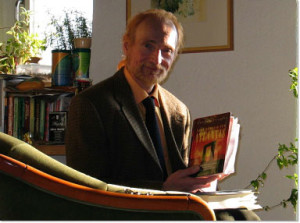 Gernot Spielvogel is a German marine geologist who has studied the Atlantis question for over 15 years and has concluded that it had been located in or near the Azores. He attributes the destruction of Atlantis to an encounter with a comet which split into seven pieces, some of which landed in the Alps and Vietnam as well as the Azores region.
Gernot Spielvogel is a German marine geologist who has studied the Atlantis question for over 15 years and has concluded that it had been located in or near the Azores. He attributes the destruction of Atlantis to an encounter with a comet which split into seven pieces, some of which landed in the Alps and Vietnam as well as the Azores region.
In a 2006 interview(a) with Atlantisforschung.de he revealed that the inspiration for his theories came from Otto Muck and Alexander Tollmann.
He claims to have fragments of the impactor as well as artefacts to support his theory on display in the Atlantis-Institut in Überlingen on Lake Constance. Unfortunately, the Institute closed following the death of Tollmann. However, it was revived under the name of forschungszentrum-atlantida (Atlantis Research Centre)(b). Although the new entity still includes Atlantis research among its activities, it has expanded into other areas, including Climate Research, Enlightenment and Archaic Medicine among others. The latter seems to be managed by Regina Rohrmüller-Spielvogel who claims to have discovered the healing properties of precious stones and minerals. At this point, I felt Atlantis slipping away!
In 2013, Spielvogel co-authored Sonnenbomben[1582] in which it is suggested that the Tunguska event was caused by a solar ‘plasma bomb’.>More recently, a YouTube video reviewed the Tunguska event and concluded that many of the remaining mysteries associated it with can be explained if it is treated as a major electrical discharge event(c).<
(a) https://atlantisforschung.de/index.php?title=Das_atlantisforschung.de-Online-Interview_mit_Dr. Gernot_Spielvogel (German)
(b) https://web.archive.org/web/20181120013509/https://www.forschungszentrum-atlantida.de/
(c) (1) Matt Finn: Tunguska Mystery of 1908 | Thunderbolts – YouTube *
Tischner, Heinrich
Heinrich Tischner was a German Protestant minister for 32 years. He has an 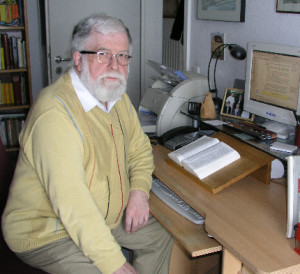 extensive website which includes a paper on the possible existence of Atlantis(a). He reviews the theories of a couple of German atlantologists, Otto Muck (Azores), and Jürgen Spanuth (Heligoland) and finds flaws in both theories. While Tischner apparently accepts the existence of Atlantis he is disinclined to offer a theory of his own. Some of his criticisms are now available in English.(b)
extensive website which includes a paper on the possible existence of Atlantis(a). He reviews the theories of a couple of German atlantologists, Otto Muck (Azores), and Jürgen Spanuth (Heligoland) and finds flaws in both theories. While Tischner apparently accepts the existence of Atlantis he is disinclined to offer a theory of his own. Some of his criticisms are now available in English.(b)
(a) Kreuzdenker, Atlantis (archive.org) (German) *
(b) Archive 2661 | (atlantipedia.ie) (German & English mixed)


